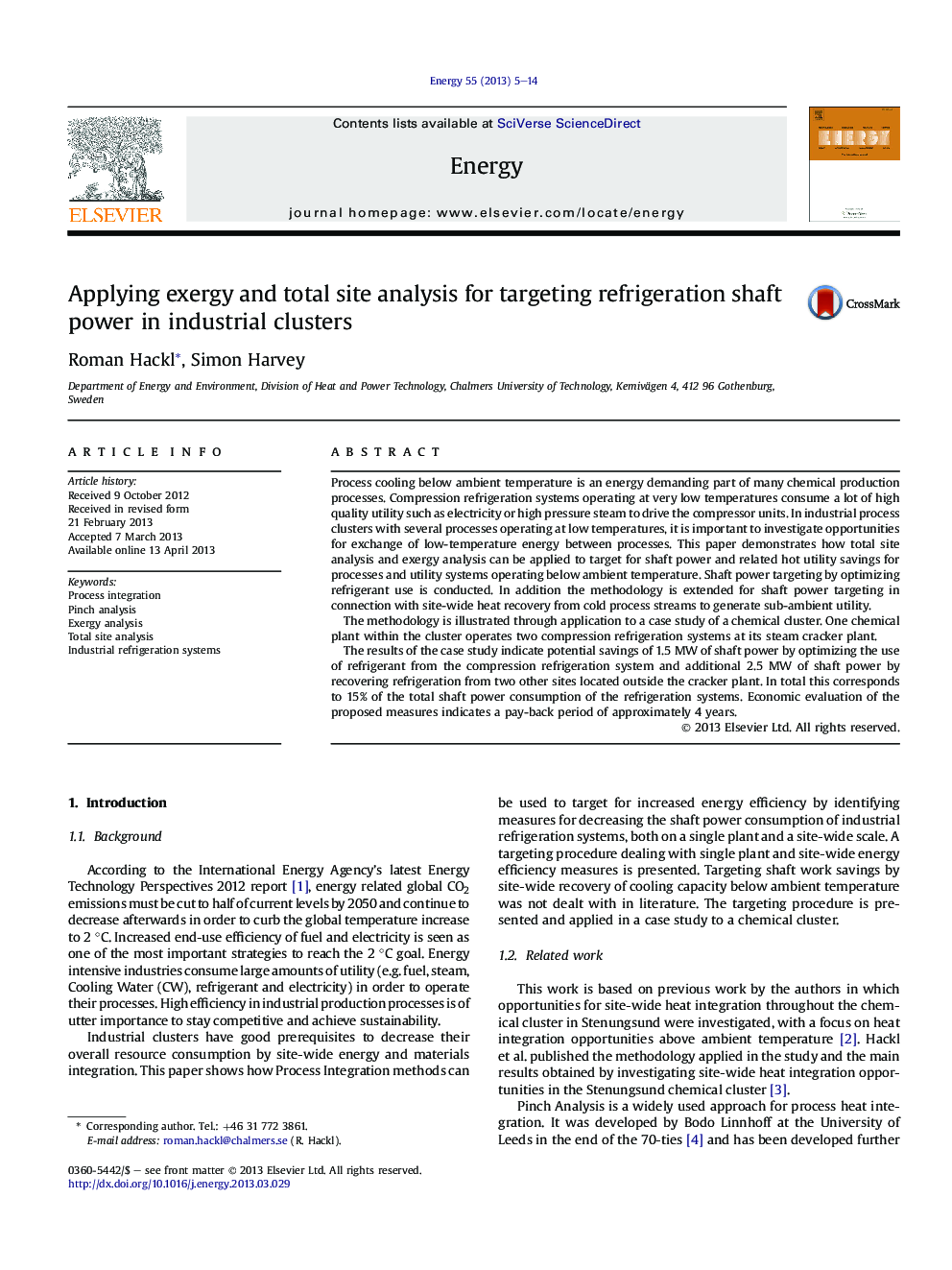| Article ID | Journal | Published Year | Pages | File Type |
|---|---|---|---|---|
| 1732939 | Energy | 2013 | 10 Pages |
•Pinch and exergy analysis applied to a refrigeration processes in a cluster.•Exergy total site profiles for investigating recovering cooling capacity.•Shaft power consumption of the refrigeration systems is approximately 26.5 MW.•Shaft power savings of ca. 15% of original shaft work consumption for refrigeration.•Utility steam savings of ca. 6.3 MW as a by-product of recovering cooling capacity.
Process cooling below ambient temperature is an energy demanding part of many chemical production processes. Compression refrigeration systems operating at very low temperatures consume a lot of high quality utility such as electricity or high pressure steam to drive the compressor units. In industrial process clusters with several processes operating at low temperatures, it is important to investigate opportunities for exchange of low-temperature energy between processes. This paper demonstrates how total site analysis and exergy analysis can be applied to target for shaft power and related hot utility savings for processes and utility systems operating below ambient temperature. Shaft power targeting by optimizing refrigerant use is conducted. In addition the methodology is extended for shaft power targeting in connection with site-wide heat recovery from cold process streams to generate sub-ambient utility.The methodology is illustrated through application to a case study of a chemical cluster. One chemical plant within the cluster operates two compression refrigeration systems at its steam cracker plant.The results of the case study indicate potential savings of 1.5 MW of shaft power by optimizing the use of refrigerant from the compression refrigeration system and additional 2.5 MW of shaft power by recovering refrigeration from two other sites located outside the cracker plant. In total this corresponds to 15% of the total shaft power consumption of the refrigeration systems. Economic evaluation of the proposed measures indicates a pay-back period of approximately 4 years.
